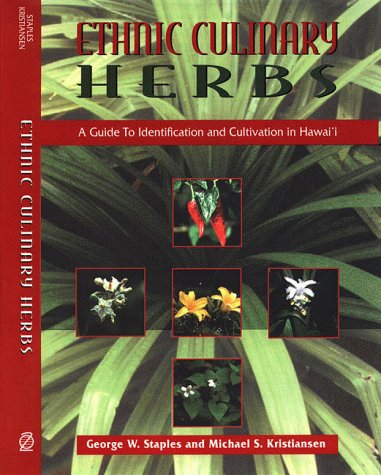-
Shop
- Back
- Shop
- Pre-Order Books
- New Releases
- Vintage Books
- Sale Books
- Children's
- Shop All
- Vintage Menus
- Risographs
- Aprons & Totes
- Moulds
- Gift Cards
- Americas
- Art & Design
- Asia & Oceania
- Europe
- Jewish
- Middle Eastern & African
- Baking & Sweets
- Drinks
- Food Writing
- Gardening & Preserving
- General & Ingredients
- Health
- Professional
- Technique
- Magazine
- Upcoming Events
- About Us
- Cookbook Club
-
Shop
- Pre-Order Books
- New Releases
- Vintage Books
- Sale Books
- Children's
- Shop All
- Vintage Menus
- Risographs
- Aprons & Totes
- Moulds
- Gift Cards
- Americas
- Art & Design
- Asia & Oceania
- Europe
- Jewish
- Middle Eastern & African
- Baking & Sweets
- Drinks
- Food Writing
- Gardening & Preserving
- General & Ingredients
- Health
- Professional
- Technique
- Magazine
- Upcoming Events
- About Us
- Cookbook Club



Ethnic Culinary Herbs: A Guide to Identification and Cultivation in Hawaii (George W. Staples, Michael S. Kristiansen)
Cilantro, lemon grass, and ginger root provide the distinctive flavor of many Asian and Pacific Rim dishes. In Hawai'i these herbs are used in everyday cooking as well as in the elaborate cuisine created by some of the Island's most innovative chefs. Yet even in Hawai'i, people find it difficult to identify these common herbs in the market or garden. Ethnic Culinary Herbs is a fully illustrated guidebook that describes more than thirty herbs grown, sold, and used in Hawai'i. (Many can also be found in ethnic produce markets throughout North America.) Unlike most herb books, which cover the same limited range of species (largely those of European and Mediterranean origin), this volume brings together information about herbs from other parts of the world and not only identifies the plants but also explains their use and cultivation.
Each species is identified by its scientific name, and common names are listed for several languages spoken in Hawai'i. (For example, the Chinese or garlic chive is also identified by its Chinese, Japanese, Filipino, Thai, and Vietnamese names.) A brief, nontechnical description of each herb is accompanied by a full-page line drawing and one or more color photographs. Entries on culinary use are followed by specific instructions for the herb's cultivation and best methods of propagation. Pests and diseases are discussed as well as their control and treatment. An index of common and scientific names permits access to main entries using any name available to the reader. For those interested in observing growing plants, an appendix provides the location of all Honolulu Community Garden sites, where many of the herbs can be found. Herb fanciers, chefs, gardeners, and botanists will be delighted with this thoroughly reliable and useful guide.
(61)
